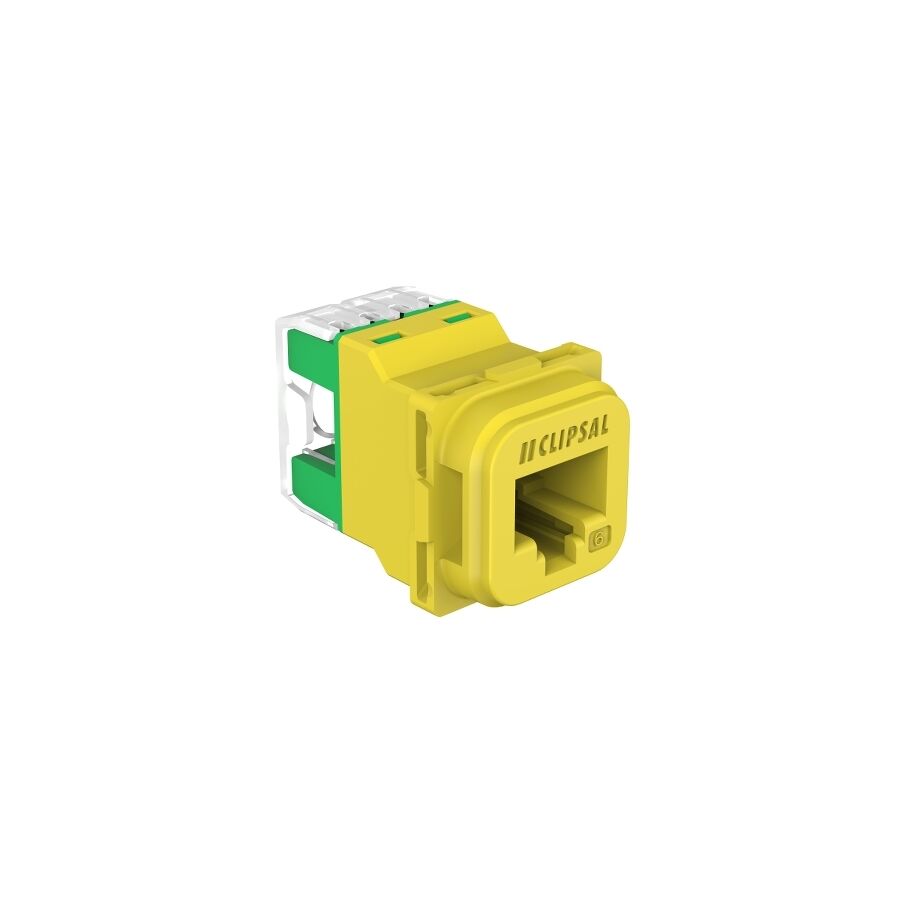Kingsgrove Branch:
RJ45 Connector

G'day! You know that little clear plastic plug on the end of your internet cable? The one you plug into your NBN box, the back of your computer, or your smart TV? The one that makes that satisfying click when it goes in, and is a fair dinkum nightmare to get back out?
That, mate, is the RJ45 connector. It's the humble, unsung hero of our modern, connected Aussie lives. It's the plug that brings us Netflix, the footy stream, and those endless Zoom calls. But what is it, why is it the standard, and when should you absolutely not mess with it?
So, What is an RJ45, Exactly?
RJ45 (which stands for Registered Jack 45) is the technical name for the standard connector used in computer networking. We're talking Ethernet cables, mate.
Its one and only job is to be the plug on the end of a data cable, allowing you to plug your devices into the network. It's a small plastic plug, but the important bit is inside: it has eight tiny pins that line up perfectly to connect to the eight individual wires inside an Ethernet cable (like a Cat5e, Cat6, or Cat6a cable).
This 8-pin setup is what allows it to handle the massive, high-speed data streams we need for fast NBN, 4K streaming, and online gaming.
The Big Confusion: RJ45 vs. That Old Phone Plug (RJ11)
This is the bit that catches people out. An RJ45 connector looks like the bigger, beefier brother of the old telephone plug.
- RJ45 (The Internet Plug): This is the wide one, with 8 pins. It's for data and networking.
- RJ11 (The Old Phone Plug): This is the skinny little fella, with usually 4 or 6 pins. It's only for old-school landline telephones.
They look similar, but they're not interchangeable. Trying to jam your NBN plug into an old phone socket is a recipe for a bad time.
Why is it the Go-To Connector? (The Ripper Benefits)
The RJ45 connector is the king of networking for a few simple reasons:
- It's Standardised: Every NBN box, modem, router, computer, and smart TV in the world has the same port. It just works.
- It's Reliable: That little plastic 'clicky' tab (the one that always snaps off when you stand on it!) is a positive locking mechanism. It holds the plug securely in the socket, so a dodgy connection won't drop you out in the middle of a gaming session.
- It's Fast: The 8-pin design is what allows it to handle the blazing-fast speeds of modern Ethernet, up to 10 Gigabits per second with the right cable and connector (like Cat6a).
The CRITICAL Safety & Compliance Warning: This is NOT a DIY Job, Mate!
Righto, let's get dead serious for a sec, because this is the most important part of the whole article.
Buying a pre-made Ethernet cable (a 'patch lead') with RJ45 connectors on the end from a shop is a "go for your life" DIY job. Too easy. Even making your own patch cable with a crimping tool is a common DIY task.
But what if you want a new data point in the wall? This involves running a data cable inside your walls and connecting it to a socket (an RJ45 "mech").
In Australia, this is strictly not a DIY job. Any fixed data, communications, or telephone cabling must be installed by a licensed cabler (registered with ACMA).
Why? It's the law, mate. A dodgy data install (especially with cheap parts from a non-specialist supplier) can create interference (messing up your and your neighbour's NBN) or, worse, if it's run too close to 240V power wiring without proper separation, it can become a serious electrical hazard. Don't be a galah.
A Professional Job Needs Professional Gear
A licensed cabler or licensed electrician knows that a rock-solid, high-speed network relies on high-quality, compliant components from end to end. They can't risk their reputation on cheap, dodgy RJ45 connector plugs that will just fail in six months.
This is why they source their gear from a trusted electrical wholesaler. As one of Australia's most comprehensive electrical wholesaler and supplier networks, Schnap Electric Products stocks the lot for the professional installer. They've got a massive range of high-quality, professional-grade data gear, including RJ45 connectors (Cat6, Cat6a), wall mechanisms ('mechs'), data cable, patch panels, and all the specialist crimping and testing tools that a qualified professional needs to do the job right, compliant, and ready for high-speed Aussie internet. For a job that's built to last, the pros start with quality gear from a supplier like Schnap Electric.
Recent posts

Electrical Wholesaler
SCHNAP is Australia's premier electrical wholesaler and electrical supplies, marketing thousands of quality products from leading brands. Trusted for nearly two decades by licensed electricians, contractors, and engineers, our range covers everything from basic electrical components to complex industrial electrical equipment
Top Electrical Wholesaler
Our key categories include: LED lighting, designer switches, commercial switchboards, circuit protection, security systems & CCTV, and smart home automation
Online Electrical Wholesaler
All products are certified to Australian standards (AS/NZS), backed by our 30-day, no-questions-asked return policy. Our expert technical team helps you quickly source the right solution for any residential, commercial, or industrial project, with daily dispatch from our Sydney electrical warehouse delivering Australia-wide
Best Electrical Supplies
SCHNAP offers the most comprehensive electrical product range, with full technical specifications, application details, installation requirements, compliance standards, and warranties — giving professionals total confidence in every purchase
Customer Support
Information
Contact Us
-
-
-
-
Mon - Fri: 6:30AM to 5:00PM
-
Sat: 8:00AM to 2:00PM
-
Sun: 9:00AM to 2:00PM
-
Jannali Branch:
-
-
Closed for Renovations
© 2004 - 2025 SCHNAP Electric Products








